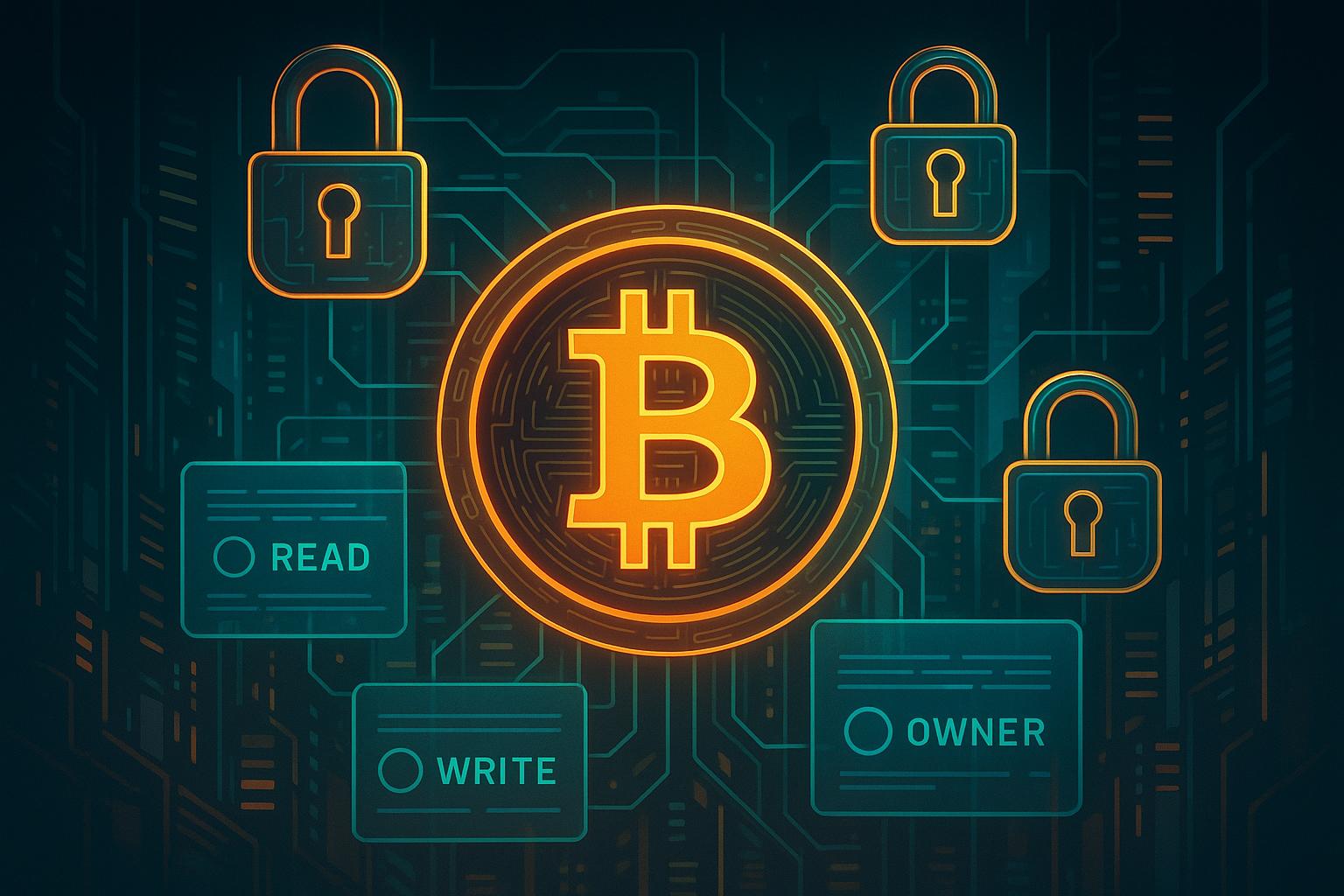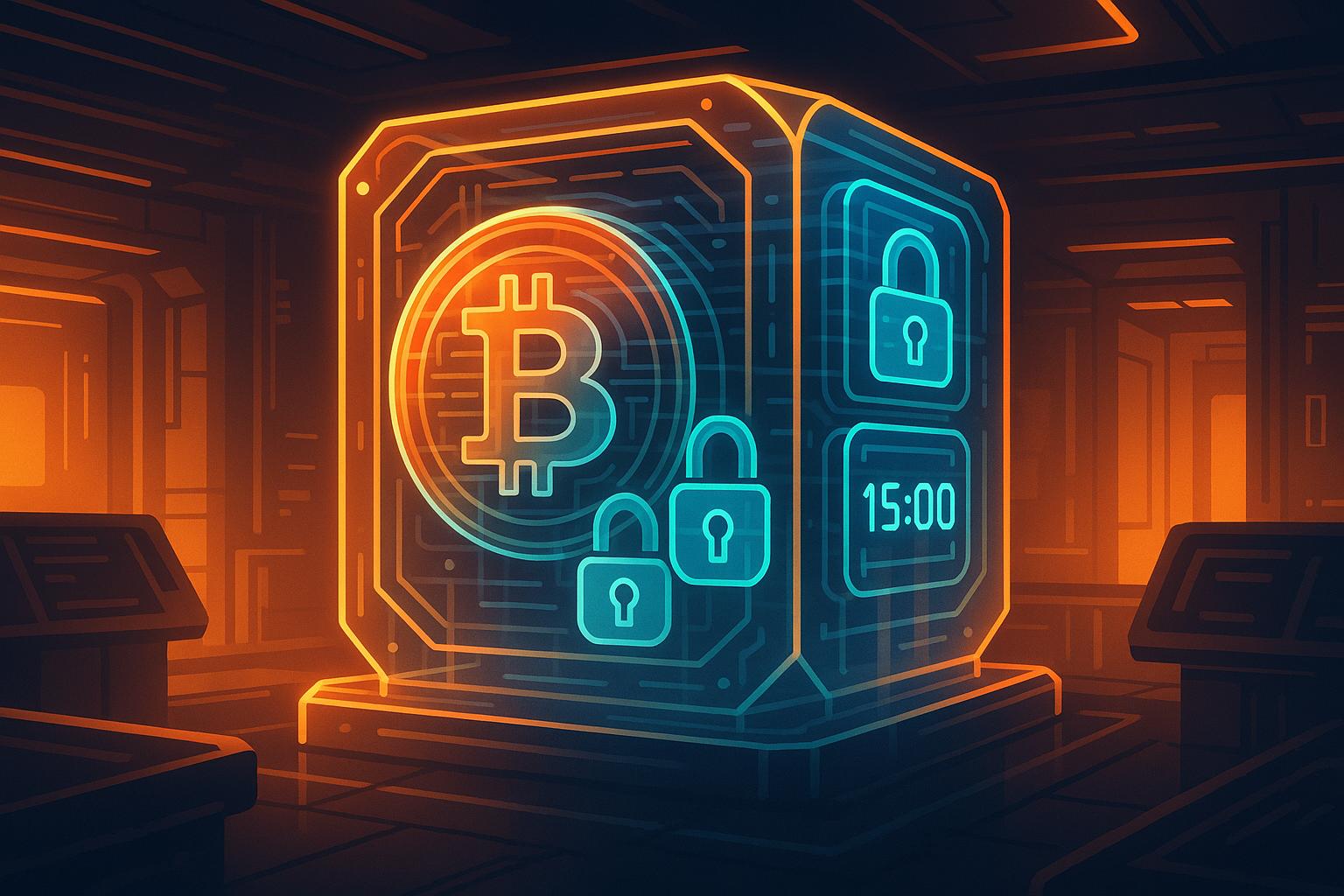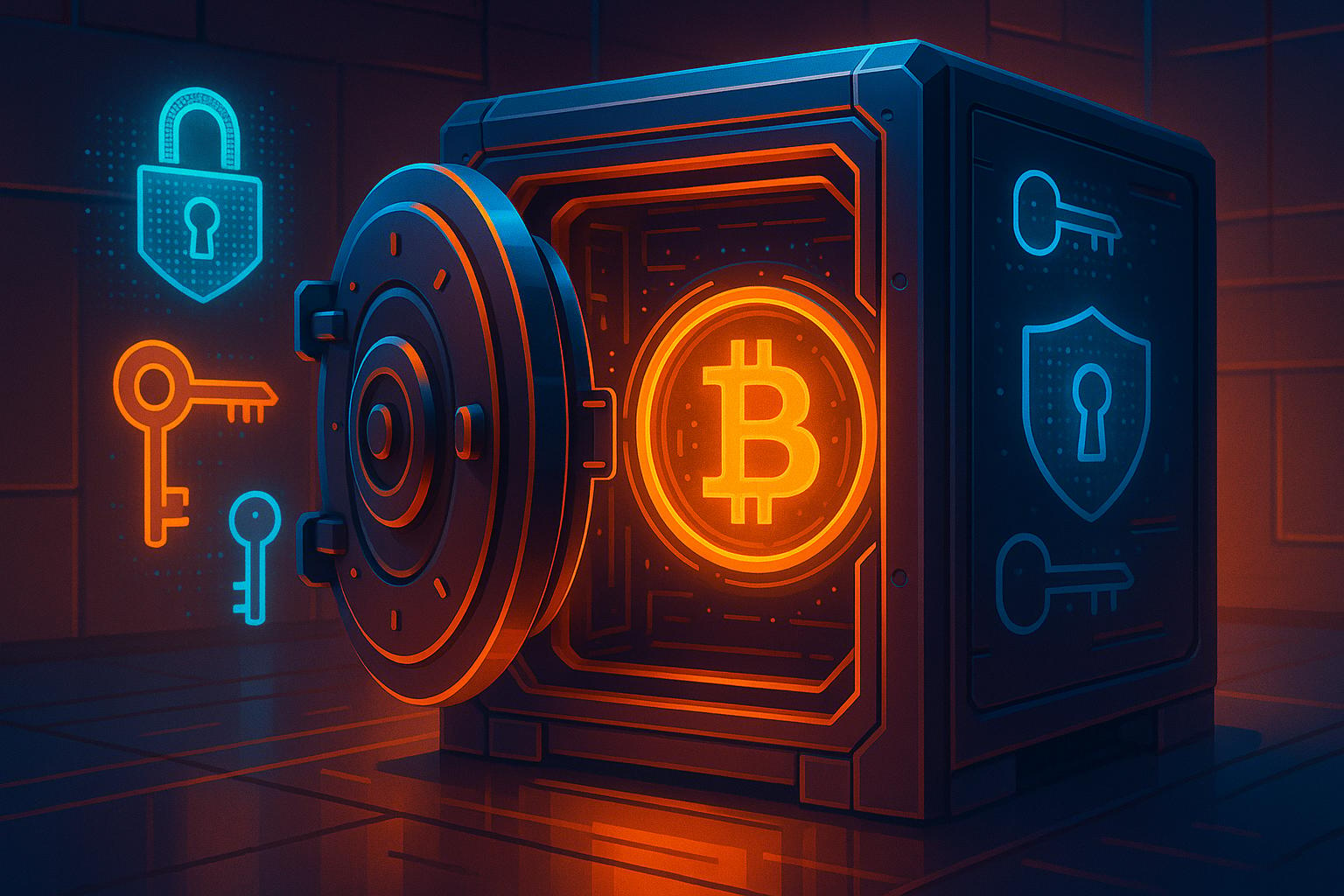Multisig wallets (multi-signature wallets) are designed to enhance Bitcoin security by requiring multiple approvals for transactions. Unlike single-key wallets, which are vulnerable to loss or theft of the key, multisig wallets distribute control across several parties. For example, a 2-of-3 setup requires two out of three key holders to approve a transaction, reducing risks tied to single points of failure.
Key Benefits of Multisig Wallets:
- Increased Security: Multiple signers prevent unauthorized transactions.
- Accountability: Clear roles and permissions create an audit trail.
- Flexibility: Configurable thresholds (e.g., 2-of-3, 3-of-5) suit various needs.
Roles in Multisig Wallets:
- Owners: Manage wallet settings, add/remove participants, and set thresholds.
- Proposers: Create transaction requests but cannot approve or execute them.
- Approvers/Executors: Approve and finalize transactions once thresholds are met.
To ensure security, permissions must be carefully managed, thresholds set appropriately, and key storage diversified (e.g., across locations and devices). Regular audits and updates to policies are critical for maintaining long-term security.
BitVault, a wallet solution, simplifies multisig management with features like time-delayed transactions, encrypted notifications, and integration with Bitcoin Layer 2 solutions for faster transactions. This makes it easier for businesses and individuals to secure their Bitcoin holdings without compromising usability.
DIY-Only Multivendor Hardware Wallet MultiSig: SeedSigner, Jade, Krux, Satochip + Sparrow & Electrum
Main Roles in Multisig Wallets
In a multisig wallet setup, each role is designed to contribute to a secure and efficient transaction process. By distributing responsibilities, this system ensures checks and balances that enhance both security and accountability.
Owners
Owners are at the top of the hierarchy in a multisig wallet. They have full administrative control, enabling them to configure the wallet, add or remove participants, adjust approval thresholds, and update security protocols.
In a business context, owners are often senior executives or founders. Their decisions carry significant weight, and any major changes typically require input or approval from other stakeholders to ensure careful oversight.
Proposers
Proposers are responsible for creating and submitting transaction requests, but they lack the authority to approve or execute these transactions on their own. This role is perfect for team members who frequently handle payment processes but don’t need full control.
Proposers might include finance staff, project managers, or department heads. They handle the details - such as recipient addresses, payment amounts, and associated fees - while leaving the final approval to others. This separation of duties not only prevents errors or unauthorized actions but also creates a clear audit trail for every transaction.
Approvers and Executors
Approvers review transaction requests and provide the necessary signatures, while executors handle the final step of completing the transaction once the required approvals are secured. In some cases, the same individuals may perform both roles to streamline the process.
For example, imagine a business with three partners managing their Bitcoin revenue in a 2-of-3 multisig wallet. Each partner holds one key, with backups stored in secure locations. Any two partners must approve a transaction, ensuring that no single individual can act unilaterally while still allowing business continuity if one partner is unavailable [1].
| Role | Responsibility | Transaction Authority | Typical Use Case |
|---|---|---|---|
| Owner | Administrative control and wallet setup | Full control over settings and permissions | Senior executives, founders |
| Proposer | Submit transaction requests | Cannot approve or execute transactions | Finance team, department heads |
| Approver/Executor | Review, approve, and finalize transactions | Can authorize fund movements when the threshold is met | Key stakeholders, board members |
This structured division of roles not only boosts security but also ensures transparency. Each participant knows their responsibilities, reducing risks while maintaining operational flexibility.
Up next, we’ll explore how to manage permissions and configure thresholds to enforce these roles effectively.
Permission Management and Thresholds
Once roles are defined, the next step is to manage permissions and set thresholds. This process determines who has the authority to act and how many approvals are needed for transactions. Essentially, it’s about creating a secure system for Bitcoin custody by building on the concept of multisig roles.
How Permission Management Works
Permission management is all about assigning, updating, or revoking roles to ensure every transaction is intentional and traceable. When setting up a multisig wallet, the owner creates a framework that specifies who holds each role and what actions they’re allowed to perform. Only those assigned specific roles can approve transactions.
As teams and structures evolve, the system must remain flexible enough to adapt while ensuring it doesn’t compromise security or efficiency.
What Are Thresholds in Multisig Wallets?
Thresholds represent the minimum number of approvals required to authorize a transaction, often described using an M-of-N format. For instance, in a 2-of-3 setup, any two of the three key holders must approve a transaction. Similarly, a 3-of-5 configuration requires three approvals out of five possible key holders.
Each configuration serves a different purpose. A 2-of-2 setup offers strong security but risks locking funds if one key is lost. On the other hand, a 2-of-3 arrangement adds a layer of security while providing a backup option. For larger teams or organizations, more complex setups like 3-of-5 or 4-of-7 allow for multiple levels of approval while maintaining operational flexibility.
How to Set Thresholds Correctly
Choosing the right threshold involves balancing security, risk tolerance, and operational efficiency. For personal use or smaller teams with trusted members, a 2-of-3 setup often works well. Larger organizations with more stakeholders may need higher thresholds, such as 3-of-5 or even 4-of-7, to ensure proper oversight.
It’s crucial to account for key holder availability to avoid delays in approving transactions. Distributing keys across different people, devices, and locations can help reduce risks.
To enhance security, consider these best practices:
- Use hardware wallets for added protection.
- Regularly back up private keys.
- Set up alerts for transaction activity.
- Test the system with small transactions before handling larger sums.
sbb-itb-c977069
How to Assign Roles and Manage Access
Managing multisig access demands careful planning. It’s about choosing dependable signers and designing a secure framework that works smoothly. Let’s break down how to pick participants, conduct regular reviews, and spread out key storage to keep everything secure and functional.
Selecting Participants and Distributing Keys
Once roles are clearly defined, the next step is selecting the right people and organizing key distribution. Choose participants you trust - those with solid experience in crypto management and a strong sense of responsibility for security.
The number of signers should align with the value being protected. For smaller amounts, a simple 2-of-3 setup might work. For larger holdings, more participants may be needed to ensure proper oversight. But don’t overdo it - too many signers can make coordination a headache.
Think about each signer’s availability, especially if they’re spread across different time zones, as this can impact response times. To reduce risks like phishing or physical threats, keep signer identities confidential whenever possible.
Set up clear signing rules, including a detailed checklist for each transaction. This should cover steps like verifying transaction details, confirming destination addresses, and ensuring the request is legitimate.
Spread keys across multiple locations and devices. Using different hardware wallet brands can help reduce the risk of device-specific vulnerabilities. Store keys in secure places such as safes or safety deposit boxes with controlled access.
Regular Audits and Policy Updates
Defining roles is just the start; maintaining security requires ongoing effort. Regular audits and updates to policies are essential to keep your multisig setup strong.
Plan quarterly audits to review participants, check thresholds, and prevent permission creep. Life changes - like job shifts, relocations, or evolving technical skills - can affect a signer’s reliability, so reassess their roles as needed.
Update signing procedures and security policies to address new threats or lessons learned from the broader crypto community. Staying proactive helps you stay ahead of potential vulnerabilities.
Geographic and Technology Diversity
Spreading out key storage across different locations and technologies adds another layer of protection. This approach minimizes risks tied to single points of failure.
Geographic diversity shields keys from localized disasters like fires, floods, or theft. For instance, in a 2-of-3 setup, you could keep one key at home, another at a family member’s house in another state, and the third in a safety deposit box.
"Decentralization is a feature, not a bug. Multisig vaults are a robust security option for long-term bitcoin holdings. Leaning into a distributed security model will help you protect your wealth for the long haul." - Team Casa [3]
Technology diversity means using different hardware wallet brands and models. This reduces the chance of vulnerabilities tied to a specific manufacturer or firmware issue.
Perform health checks on your devices every six months to ensure they’re working properly and have the latest firmware updates. If you need to move keys, transport them separately to avoid creating a temporary single point of failure.
Finally, have a disaster recovery plan in place. This should outline steps for handling key loss or geographic disruptions while maintaining strict security measures.
The goal is to strike a balance between strong security and practical usability. A well-thought-out multisig setup protects your assets while avoiding unnecessary complexity that could lead to errors or delays.
How BitVault Simplifies Multisig Access Control

Managing multisig wallets can feel overwhelming, but BitVault makes the process much easier. By combining top-tier security with an intuitive setup, it delivers enterprise-level Bitcoin protection without unnecessary complexity. Let’s explore what sets BitVault apart.
BitVault's Security Features
BitVault takes the core principles of multisig roles and permissions and elevates them with advanced security measures. As an open-source, non-custodial wallet, it ensures you retain full control over your Bitcoin while benefiting from automated safeguards.
One standout feature is time-delayed transactions. When a transaction is initiated, BitVault enforces customizable delays, giving participants time to review and, if necessary, cancel suspicious activity. This is especially useful in cases of compromised keys or coercion attempts.
Another layer of security comes from secret notifications. These alerts discreetly inform participants about wallet activity without revealing sensitive details, keeping everyone informed without exposing private data.
BitVault also employs AES 256-bit encryption and holds a CISA+ security certification, offering a level of protection trusted by institutions. Its open-source code undergoes constant scrutiny from global security experts, ensuring any vulnerabilities are quickly identified and addressed.
Customizable Multisig Configurations
Beyond security, BitVault stands out for its flexibility. Recognizing that organizations have different needs, it allows you to tailor multisig setups to fit various scenarios.
For example, you can adjust signature thresholds based on transaction size or type. A 2-of-3 setup might work for day-to-day expenses, while larger transactions could require a 4-of-5 configuration. The platform’s user-friendly interface makes these changes simple.
BitVault also supports detailed role assignments. You can designate specific participants as transaction proposers while limiting others to approval-only roles. This ensures permissions are aligned with each participant’s responsibilities.
Additional features include tracking key storage across different locations and devices, as well as L1 fee optimization. These tools help balance security, cost efficiency, and operational ease.
Integration with Bitcoin L2s
BitVault’s integration with Bitcoin Layer 2 solutions enhances its functionality, offering both security and convenience.
Through the Lightning Network, your multisig wallet can handle micropayments and frequent transactions efficiently. While Bitcoin’s base layer processes about seven transactions per second[4], the Lightning Network can theoretically handle up to 1 million transactions per second[5]. This makes it ideal for small, routine payments without the delays or high fees of on-chain transactions.
For larger transfers, BitVault supports the Liquid Network, which offers faster settlement times and enhanced privacy. With a 2-minute settlement time and the ability to process 7 to 10 transactions per second[4], the Liquid Network is perfect for substantial transactions that require multisig approval but also need quicker execution.
These integrations also provide additional privacy, shielding sensitive financial operations from public view. BitVault’s seamless interoperability automatically routes transactions through the most suitable layer, based on your rules and the current network conditions, eliminating the need for extra wallets or technical expertise.
With its blend of robust security, flexible configurations, and advanced integrations, BitVault simplifies multisig wallet management while delivering the protection and control organizations need.
Conclusion
Multisig wallets transform Bitcoin security by addressing the vulnerabilities of single-key setups. By removing the single point of failure found in traditional wallets, they provide a stronger foundation for safeguarding Bitcoin holdings [2]. For those serious about Bitcoin custody, multisig wallets are a must-have.
To make the most of multisig wallets, it’s crucial to assign clear roles and configure thresholds that align with your organization’s structure. This flexibility in permissions ensures that security protocols can evolve alongside operational needs [6].
Tools like BitVault simplify multisig management by offering features such as time-delayed transactions, encrypted notifications, and AES 256-bit encryption. These tools also integrate with Bitcoin Layer 2 solutions, making them suitable for everything from micropayments to large-scale institutional transfers.
As organizations grow or face changes - like key holder turnover or compromised keys - multisig roles can be adjusted to maintain security and functionality. This adaptability ensures that voting and execution capabilities remain effective over time [6].
With its open-source framework, BitVault makes advanced multisig access control available to organizations of all sizes. This combination of secure access and flexible permissions is key to ensuring safe and reliable Bitcoin custody.
FAQs
How do multisignature wallets provide better security than single-key wallets?
Multisignature (multisig) wallets bring an extra layer of security by requiring multiple private keys to authorize a transaction. This setup removes the vulnerability of relying on just one key, making it much harder for attackers to access your funds - even if one key falls into the wrong hands.
These wallets are also perfect for situations that involve shared control, like business accounts or joint finances. By spreading the responsibility across several parties or devices, multisig wallets greatly enhance the safety of your Bitcoin and reduce the chances of unauthorized access.
What should I consider when setting approval thresholds for multisig wallets?
When setting up approval thresholds for multisig wallets, finding the right balance between security, redundancy, and efficiency is key. A higher threshold, like requiring 3 out of 5 approvals, boosts security by involving more participants in transaction authorization. But keep in mind, this can slow things down if approvals take longer to obtain. On the flip side, a lower threshold makes transactions quicker and more convenient but might compromise security.
To strengthen protection, consider these practices: distribute keys among trusted individuals or locations, keep at least one key offline in cold storage, and tailor thresholds to match your specific risk tolerance and operational needs. Take the time to evaluate your situation, ensuring your wallet setup strikes the right balance between accessibility and security.
How does BitVault make managing multisig wallets easier and more secure?
BitVault makes handling multisig wallets easier by providing tools that focus on both security and ease of use. Features like time-delayed transactions and multisig convenience services simplify wallet setup and everyday operations while maintaining strong defenses against potential risks.
By requiring multiple signatures to approve transactions, BitVault removes single points of failure, significantly lowering the chances of theft or unauthorized access. These security measures make managing multisig wallets simpler and more reliable, offering users confidence when protecting their Bitcoin.




